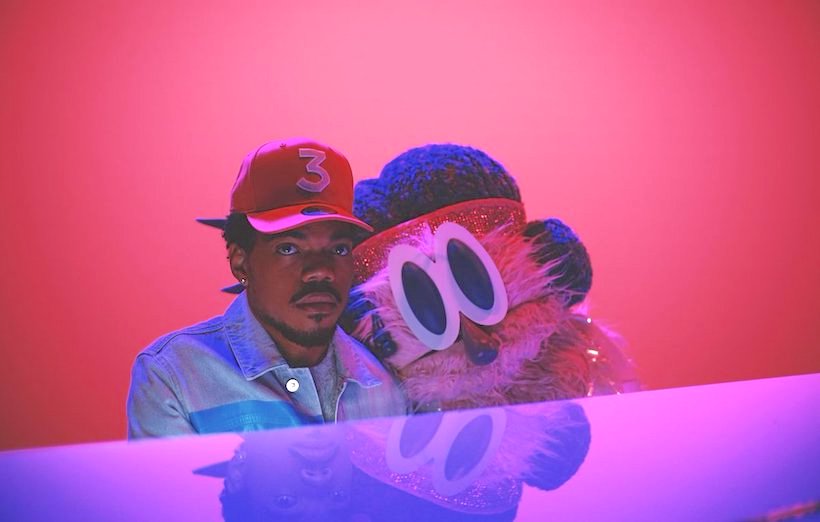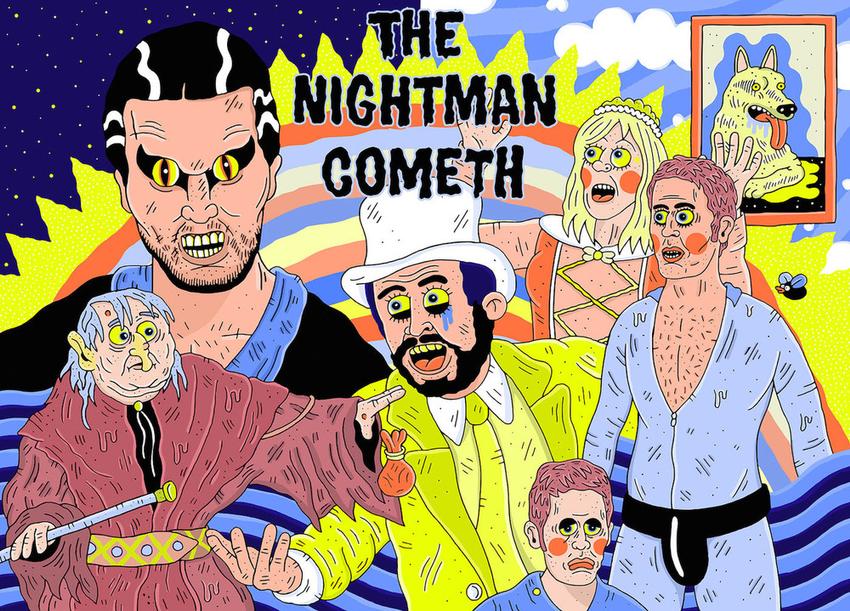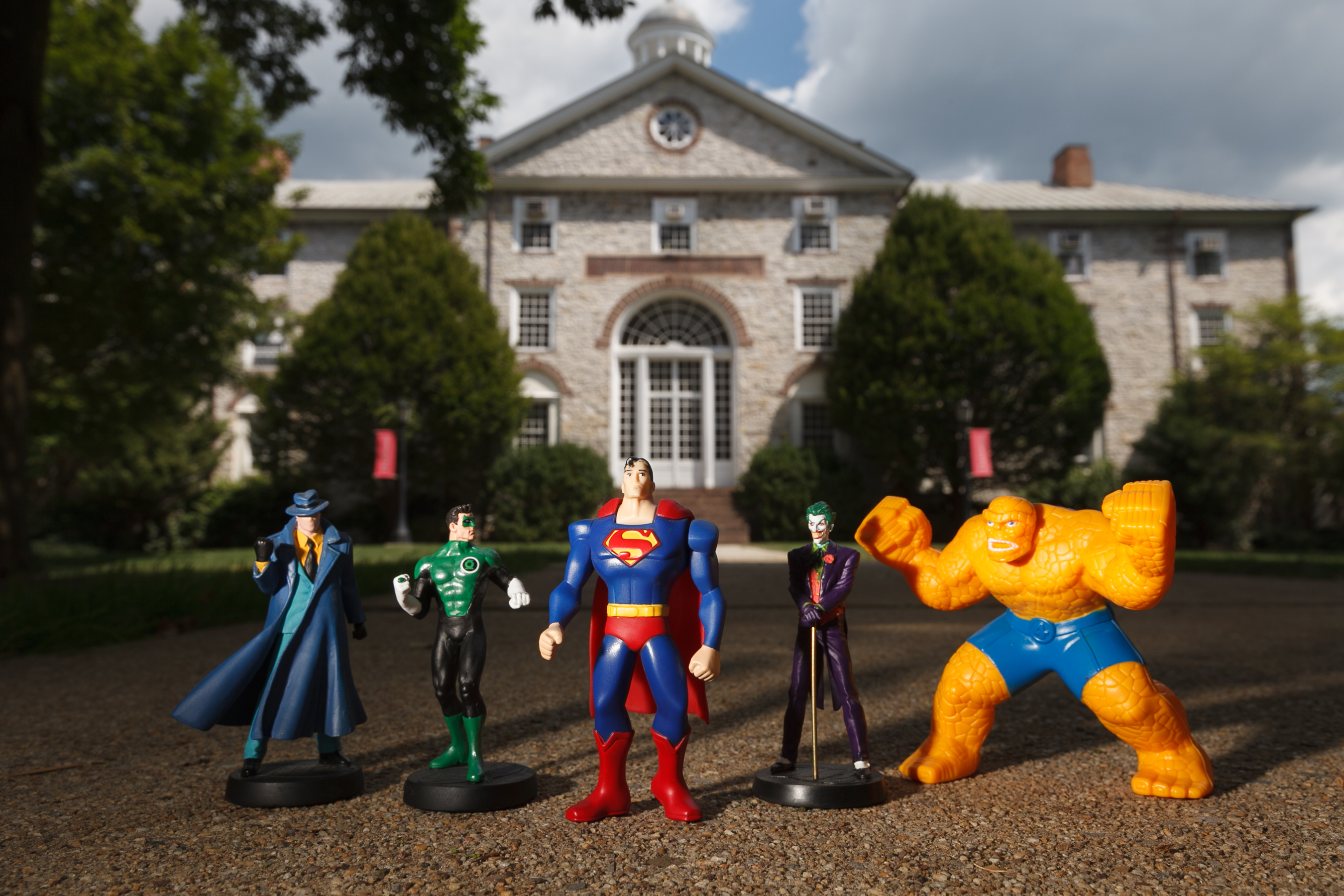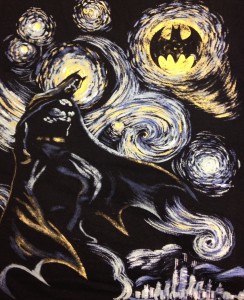When I first listened to Chance the Rapper’s Coloring Book, I thought it was a pretty lackluster save for one song. My judgment may have been a little harsh, since I was comparing it to Chance’s previous mixtape Acid Rap (which I’ve come to realize I’d romanticized and so had downplayed its flaws in my memory) and the two are very different albums born of different circumstances. I love Acid Rap’s consistent tone, I think that’s really what rewards listening to it all the way through and solidifies the album as one concrete thing to me. While the same can’t be said of Coloring Book, it was a major studio release while Acid Rap was just a mixtape, so it was obviously made over a much longer period of time and there was likely a much greater dispersal of artistic control. Chance also had access to new collaborators and so wanted to experiment with new sounds, which is admirable. It would have been disappointing if he tried to replicate Acid Rap, but I still can’t help but missing that unique, consistent mood. When I first listened to “Same Drugs,” I remember thinking that it was “hands down” his best song ever — an honor that, upon reflection, I’d still apply to it. I thought it not only extended the style that I’d come to associate with Chance, but expanded on it, which is strange considering how different it is from every other song he’s made. So why such high praise?
Before continuing, it’s worth considering that question as more than just a rhetorical transition. I do think it’s fairly curious that I like this song so much. It’s definitely somewhat of a departure from the carefree, fast-paced, acid-drenched style that made Acid Rap so memorable. I think my general notion of the idea of what an artist’s “best song” is is that it’s the best example of their trademark style, but this isn’t the case with “Same Drugs,” a slow-paced, sung piano ballad that, despite its title, is among the more sober songs on the album. All that being said, what’s truly incredible is that despite the fact that Chance eschews all of his traditional stylistic elements, the song is inexorably and immediately identifiable as a “Chance the Rapper” song. The fact that Chance took the effort to find the proper style to house this song and execute it well, a style which wound up being a departure from his norm, gives me the impression that the song’s attempt to evoke emotion must be sincere. Chance didn’t make a ballad for the sake of making a ballad, he made this song a ballad because that’s what he needed to do to make it function properly. Anything resulting from that sort of decision making is clearly trying to communicate something and so becomes recognizably genuine and communicates what it tries to more effectively for that genuineness. When art comes from a sincere place, it creates its own positive feedback loop — a phenomenon that I think is beautiful in itself. Essentially, I’m saying that the reason why I think it’s weird that I like the song so much (that it’s such a departure from Chance’s style) is the reason why I like it so much.
So how is this song so different from Chance’s others? Chance the Rapper is, as his name would suggest, a rapper and it is worth noting that “Same Drugs” is entirely sung (that being said, per Chano on “Smoke Again”: “she like when I rap raps, but better when I sing songs”). It’s not that singing is out of his wheelhouse, but rather that he generally sings in only (seemingly skill-confined) short bursts. When Chance is rapping, he has a melodic, potentially booming voice that can articulate clearly at high speeds while still maintaining his cadence and signature raspy style. His singing voice, however, is small, gentle, and sort of timid. His raspiness and playful delivery give his voice an air of fragility — it feels as if he’s barely maintaining each note he sings and is trying his very hardest to keep from slipping off-key, but still attempts daring feats, reaching far into both extremes of his range, like a tightrope walker who can barely keeps his balance walking down the rope before attempting a front flip, his arms flailing wildly all the while. Beyond the stunt-pilot spectacle this fragility brings, his hesitant timbre also excellently evokes his character. While he may not be a fantastic singer by professional standards, his voice seems to be alive with his intimately-shorn, well-articulating personality, breathing naked life into whatever he sings.
In addition to his prolonged singing, the soft piano music is also uncharacteristic of Chance. The phrase “Chance the Rapper instrumental” has come to evoke horns, low-fi generic drums, and pitched and layered vocals, but the instrumental here creates a wildly different, pared-back mood that still jives well with the smokiness of the rest of the album. But if the resonant low-keys, decay-snipped twig claps, and off-kilter base melody on “All Night” elicit an alcoholic haze, the piano in “Same Drugs,” which is later accompanied by strings and a dreamy vocal distortion, communicates a haze of nostalgic simplicity and childhood innocence.
To return to my contradictory assessment of my enjoyment of “Same Drugs” and phrase it in a non-contradictory way: I think an artist’s best song is the best example of their style. Chance’s style is defined by his his personality. This song is outside his traditional style but has a heartfelt message and so it seems like an effort to communicate a sincere part of himself. Since it’s both so different and sincere, it defines Chance more completely than any of his other songs and so, in a counter-intuitive way, is the best example of Chance’s self-articulating style.

You may be thinking that my musings about sincerity are all well and good, but why talk about why I like “Same Drugs” now? Coloring Book was released all the way back in the May of 2016, so this reflection isn’t exactly timely. The music video for “Same Drugs” was, however, released this February and got me thinking about the song again (granted, February was five months ago, so that retort doesn’t make the circumstance much less weird. The truth is that I wanted to write something back in February and decided to write it now on a whim). The video features a slightly different version of the song, which has expanded vocals from Eryn Allen Kane, Yebba, John Legend, Francis Starlite and Macie Stewart. Eryn Allen Kane’s vocals now stretch beyond their initial confinement of the choir and stand by themselves alongside Chance’s, transforming the song into a duet. When I first saw the video, which is directed by Jake Schreier, I was thrown by this change, along with the video itself (which I will get to), as they slightly morphed how I perceived the meaning of the song.
The original version of “Same Drugs” feels like a deeply personal solo ballad in which Chance is singing to a former childhood friend. The song utilizes an extended Peter Pan metaphor, likening the way that this childhood friend has grown up and apart from Chance to the way that Wendy grew old while Peter remained the same — the title referring to the fact that they no longer share the same interests, values, or outlooks. The song is sung by Chance from the imagined perspective of this friend, making the song a lamentation on the way he’s all but disappeared in her eyes — as if Wendy held onto Peter’s shadow to remember him by but wound up forgetting what the real him was like. Because this woman has Chance’s “shadow,” he knows she’s thinking of him and it pains him to imagine her memories of him remaining intact but decreasing in significance with each passing day. A part of him, his shadow, belongs to her and because she no longer holds dear what she used to, that part of him is all but worthless.
In the video, the weight of this knowledge is represented literally. As the video opens, Chance sits behind a piano with a giant, freakily glitter-glossed diva muppet — a stand in for Wendy — resting uncomfortably on his shoulder. He sings his way through the opening chorus and verse, glancing over at the muppet with a look of anxious frustration from time to time. Then, all of a sudden, when the second chorus kicks in, the muppet springs up and begins singing, sometimes in unison with Chance, other times trading lines with him, flipping the original lines from the third person to the first (e.g. “she don’t” becomes “I don’t”).
After the second verse, she flops back down on Chance’s shoulder, dormant again. He resumes looking annoyedly over at (and away from) her and, after a couple attempts to shrug her off, stands up, letting her flop down on the ground. That moment, where he let the stupid-looking muppet flop on the ground, is where my interpretation of the video really changed from that of the song.

I viewed the song as holding up meditation on nostalgia as the solution to the ails of change and responsibility. At first, the video only supported that conclusion, being shot with a very grainy filter and nostalgic palette in a polaroid-esque aspect ratio, giving it an air of wistful romanticism. In this vein (skipping the world-changing dropping of the muppet), as Chance walks away from the piano, he sings about not forgetting “the happy thoughts,” the things that allowed the children to fly in Peter Pan and, as later lines confirm, a reference to the memories of their childhood: “the past-tense, past bedtimes / way back then when everything we read was real and everything we said rhymed” (rhyming being both a reference to the cadence of children’s stories and the fact that their outlooks synced up). Chance then encourages her to “stay in the lines,” which, although at first glance seems counter to the carefree nature of childhood, is a concluding reminder to reflect on those happier days they shared (if growing up is taking on responsibility, then what better captures how unencumbered childhood is than the remembered feeling of importance that trying to correctly fill out a coloring book once had). Essentially, the two have become strangers but still hold pieces of each other which have all but died, but some life can be injected back into those pieces by reflecting on the memories of when they fit together (reference to puzzles, not sex joke).
However, “stay in the lines” is also a command to not change. He wants to hold on to the romantic conception of her that he once had and he can’t do that knowing that they no longer connect. The video gives Wendy a voice and makes clear that she also thinks fondly of those times, but is still fundamentally different from Chance (see: the fact that she’s a muppet), which is in line with the initial message of the song: they’ll always be apart, but they’ll still always have their memories of being together. The video changes this interpretation by having Chance leave Wendy behind. Once he drops her, snow starts falling from the ceiling and the lighting changes, creating an image reminiscent of passing stars and a galaxy. Then, Chance leaves the stage with the piano and the now-hidden muppet and the color palette changes, the image becomes sharper, the aspect ratio goes from fullscreen to widescreen, and, as Chance walks out of the studio and into the street outside, we can see that everyone else is a muppet.

How fucking existential.
Initially the reveal that everyone else is a muppet struck me as really fucking dumb (oh Chance is saying that he’s the only “real” one in “the game” and everyone else is just a big phony. Look at the rap world Holden Caulfield everybody, I can’t believe that I told people I like you), but when you consider the contextualizing Peter Pan metaphor, it takes on a significance that is actually worthwhile. The passing stars and changing cinematography signify a clear change of state, and I think that it’s showing Chance leaving the Neverland of his art and returning to Earth. This is reinforced by the nostalgic visual reference to the muppet show, the famed behind-the-scenes set of which (the set which childish wonder is built upon) Chance walks through and out onto some dirty LA street.
In this reading, the notion that the song posits, that Wendy has some romantic significance and that the distance between them is tragic, becomes a comforting falsehood that he’s shedding. The fact that everyone else is a muppet doesn’t signify the fact that Chance is the only real person, but that Wendy doesn’t hold any real significance and that, just like everybody else, he’s as isolated from everybody he sees as much as he is from her.
Still, even with this comedown, the final chorus soars even higher than the original, with added vocals from John Legend and others. So, while the message is changed, Chance’s concluding reminder (“Don’t forget the happy thoughts / All you need is happy thoughts”) isn’t undercut. Those memories are still of significance. The difference here is that the Chance of the video has grown up and, unlike the version of him from his memories, realizes that — while it may be romantic to imagine that there’s still something significant about Wendy — he’s not beholden to uphold the romantic conception of her that he held in those memories and that the memories will still be valuable without maintaining that conception It’s no longer tragic to know that she doesn’t hold that conception of him. People change and grow apart and sometimes that means people that were once compatible no longer are. In realizing that connections don’t have to be eternal to be real — that people aren’t continuous entities, but continuously-changing and both self and other-defined — and that he can still cherish the Wendy of his memories without connecting to Wendy as she is now, Chance changes himself. Asking Wendy to “stay in the lines” is no longer an impossible task because he’s not asking Wendy as she exists now, but as she was all those years ago.
The refrain echoes among the crescendoing, dramatic vocalizations as Chance leaves behind the idea of Wendy as a tragic stranger (and with it Neverland), maybe for good. Chance, at the song’s end, is more encumbered by responsibility towards others for having grown up, and yet, freer than ever.
The present belongs to everyone, but our past is ours to keep.





Recent Comments